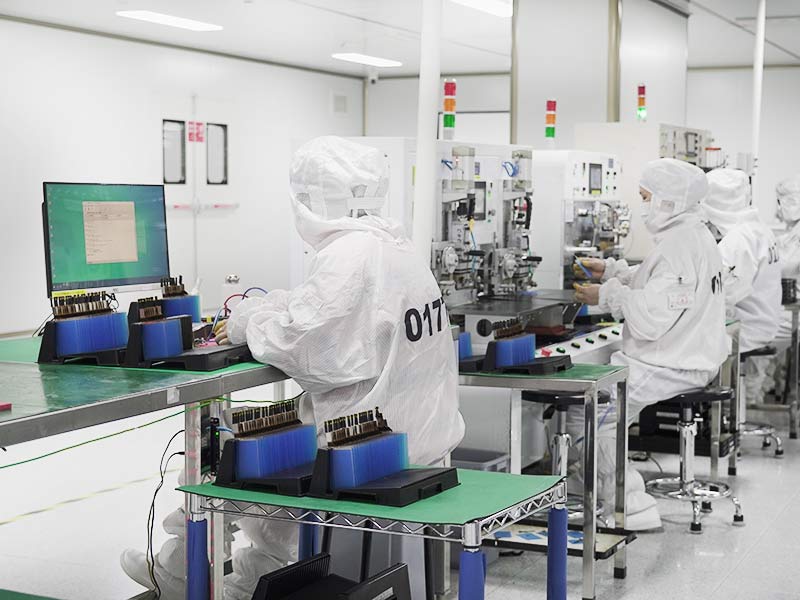Your cart is currently empty!

What sizes and resolutions are generally chosen for industrial displays?
There are many common sizes of industrial displays, including 5.6 inches, 6.4 inches, 8.4 inches, 10.4 inches, 12.1 inches, 15 inches, 17 inches, 19 inches, 18.5 inches, 21.5 inches, etc. Some sizes can also be customized. In terms of resolution, industrial displays of different sizes have different resolutions. For example, the resolution of an 8.4-inch industrial display is usually 1024×768; the resolution of a 15.6-inch high-definition industrial display can reach 3840×2160; the optimal resolution of a 12.3-inch industrial LCD screen is 1920×720. This resolution has a high pixel density, the image display is more delicate, and the edges of text and graphics are clearer. It is very important for industrial applications that require precise data display and image processing. In addition, the 12.3-inch LCD screen with a resolution of 1920×720 provides a widescreen ratio, which is conducive to displaying more information content. In applications such as industrial control panels and monitoring systems, more data tables, curves or video images can be displayed simultaneously, improving work efficiency and user experience. However, when choosing the size and resolution of industrial display screens, it is necessary to weigh them according to the actual application scenarios and needs, such as the application environment, display information and display data.
Common sizes of industrial display screens
Common sizes of industrial display screens vary to meet different application scenarios and needs. Common sizes include 6.5 inches, 8.4 inches, 10.4 inches, 12.1 inches, 15 inches, 17 inches, 19 inches, 21.5 inches, etc. For example, in some small devices, 6.5-inch or 8.4-inch displays may be more suitable because they can provide necessary information display in a limited space. In large industrial control equipment or monitoring systems, large-size displays such as 19 inches and 21.5 inches can display richer and more detailed information, making it easier for operators to conduct comprehensive monitoring and operation.
With the continuous development of industrial technology, some new sizes have gradually emerged. For example, sizes such as 8 inches, 10.1 inches, and 11.6 inches have also been used in specific industrial fields. Displays of different sizes differ in visible area, display effects, and applicable scenarios.
Basis for selecting the size of industrial display screens
Choosing the size of industrial display screens requires comprehensive consideration of multiple factors. First, consider the installation space and overall layout of the equipment. If the installation space of the equipment is limited, then a smaller display screen needs to be selected to ensure reasonable installation. Secondly, it should be selected based on the amount of information and complexity of the displayed content. If a large amount of data, charts, or complex images need to be displayed, a larger display screen can provide better visibility and ease of operation.
In addition, the viewing distance of the operator is also an important factor. If the operator is far away from the display screen, a larger display screen can ensure clear transmission of information; if the distance is close, a smaller display screen can also meet the needs. At the same time, the application scenario will also affect the choice of size. For example, in an industrial automation production line, a medium-sized display may be more suitable, while in a large monitoring room, a larger display may be required to display multiple monitoring screens.
Resolution of industrial displays of different sizes
Industrial displays of different sizes usually have different resolutions. Smaller displays, such as 6.5 inches, may have a common resolution of 640×480 or 800×480. The resolution of an 8.4-inch display may be 800×600 or 1024×768. The common resolution of a 10.4-inch display is 1024×768 or 1280×800. Larger displays, such as 19 inches, usually have a resolution of 1280×1024 or 1440×900, while a 21.5-inch display may have a resolution of 1920×1080.
It should be noted that the same size display may also have multiple resolution options, depending on the technology and manufacturing process of the display.
Factors affecting the resolution of industrial displays
The resolution of industrial displays is affected by many factors. The first is the manufacturing technology and process level of the display. Advanced manufacturing technology can achieve higher pixel density, thereby improving resolution. Second, the size of the display has a direct impact on the resolution. Generally speaking, larger displays can accommodate more pixels, thereby achieving higher resolution.
In addition, application requirements are also an important influencing factor. For industrial applications that require high-precision image display and data processing, such as medical imaging, precision instrument operation, etc., higher resolutions are usually required to ensure image clarity and data accuracy. For some simple industrial control and monitoring scenarios, lower resolutions may be able to meet the needs.
Adaptation of industrial display resolution and size
The resolution and size of industrial displays need to be adapted to achieve the best display effect. For example, for smaller displays, such as 6.5 inches or 8.4 inches, if the resolution is too high, the text and images may be too small, which is not convenient for viewing and operation; if the resolution is too low, it will affect the clarity and detail display of the image.
For larger display screens, such as 19-inch or 21.5-inch, lower resolutions may make the image appear blurry and rough, while too high a resolution may place higher requirements on hardware performance and increase costs. Therefore, when choosing an industrial display screen, it is necessary to comprehensively consider the adaptation relationship between resolution and size according to the actual application scenarios and needs to achieve clear, comfortable and efficient information display.
In summary, when choosing the size and resolution of an industrial display screen, it is necessary to fully consider multiple factors such as the installation space of the device, display content, viewing distance, application scenarios, etc., to ensure that the most suitable display screen is selected to improve work efficiency and operational convenience.
